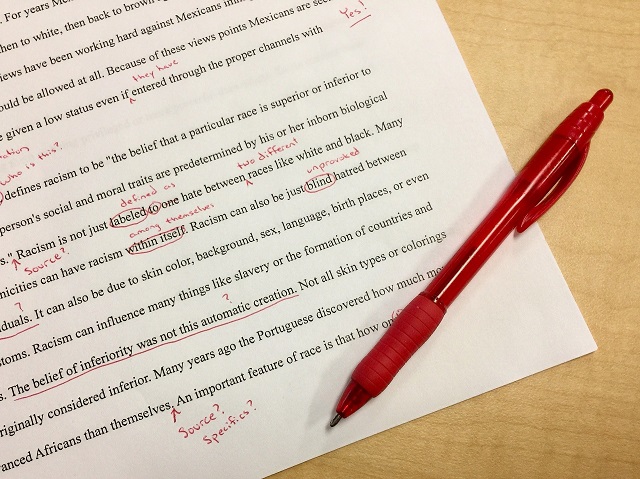
You’ve finished the draft of your book and you’re ready to hand it off to an editor. What now? Do you simply hit the SEND button or is there something you, as the author, are supposed to do with the electronic file before letting it go?
I expect my editing clients to do only a few things before giving me their file. Most are requests more than requirements. Usually, I simply make sure they provide a Microsoft Word file (which is fundamental requirement of most editors) and the rest is just worked out during the editing process.
Wondering whether other editors require any specific file formatting from clients before the professional edit begins, I recently conducted an informal survey of my peers. As expected, responses ranged widely. Some editors have suggestions for authors but no mandatory requirements (more like an editor’s wish list), while others have no requirements at all and are willing to accept manuscript files in any condition or format. I hope their responses are useful to you as you take the next steps toward publication.
Following these tips can make the editing process go more quickly, with less hassle, and lower cost. Just as it would be careless for you to skip spelling and grammar checks before submitting your MS, there’s no reason you can’t also do these basic formatting and self-editing tasks.
A Few Words about Traditional Publishing
If you’re pursuing the traditional publishing path, you’ll have to follow the publisher’s submission requirements precisely. It’s your responsibility to locate them—usually on their websites under “submission guidelines”—and to abide by them. Longstanding formatting practices from the days of submitting in hardcopy often still apply to the electronic file submission: Times Roman font in 12 point, 1-inch margins on all sides, double line spacing, black "ink." But don’t assume this is the only way.
Many publishers now accept manuscripts only through Submittable and have instructions and a link on their website to do that. But do your research. Your MS will be sent to the round file immediately upon receipt if you don’t follow their instructions to the letter.
If you’ve targeted a publisher that specifies Canadian or Australian or British spelling, Editor J.K. Kelley advises keeping a copy of your original MS in your native spelling and making a second copy for your submission. In the submission copy, set your Word dictionary to the applicable country’s spelling and run a spell check. Skip this and risk making the publisher feel their nationality and/or their requests have been disrespected. Or they may believe you sent your MS without seeking out their requirements and your MS could be seen as a mass mail-out rather than a targeted submission, landing you immediately in the reject pile.
File Format
Rarely will an editor whose work focuses on developmental, content, or line editing request a hard copy of a MS. Sometimes copy editors and, particularly, proofreaders will work from a hard copy or PDF output, especially if they’re tasked with assuring the page numbers, headers, footers, and other elements are properly done.
Most editors prefer to work in MS Word. Many, in fact, insist on it. Although it has shortcomings, it’s generally the easiest for editing, with tools and features specifically for the sharing and review of revisions and comments. If you aren’t acquainted with the comments and tracking features in Word, LEARN THEM. Tutorials on YouTube and the Microsoft website can help you develop MS Word skills that will serve you well for the rest of your writing life.
Some freelance editors accept other file formats, including PDF files, but most do not. Other programs don’t offer the flexibility that MS Word does and/or the process for commenting and tracking changes takes significantly more time to execute.

Additionally, some programs claim to output to doc or docx files, but conversions can provide less than desirable results, sometimes losing entire paragraphs in the file translation. How awful it would be to send your MS to the editor and, upon its return, realize the file she edited was not what you thought you’d sent her. Someone would then have to compare the original and the outputted, edited file to find what’s missing, resulting in time, money, and perhaps a bit of sanity lost.
If you must provide a file format other than MS Word, make sure the editor is aware in advance; find out upfront if this would take extra time and add to your costs.
Manuscript Layout
Generally, don’t try to make your written work look a certain way on the page/screen. This isn’t the time to get fancy with the layout. Even if you spend hours making your file “pretty,” selecting a certain font, using color, matching the look of a favorite book or the online journal you plan to submit to, everything you do might be stripped away when it reaches the editor, especially if it impedes her work. Don’t waste your time. Focus on the content first; the look of it comes later.
Having said that, editors universally have two simple recommendations concerning file layout:
- Do not to use tabs or hit the space bar five times to create indents or center text, including inside tables and text boxes
- Use only one space after punctuation at the ends of sentences
If you aren’t comfortable with basic MS Word formatting commands, use the defaults, or better yet, look up those YouTube videos and make yourself knowledgeable to make your life easier.
If you want blank pages in your manuscript, provide some indication where these are intentional. Simply type the words “intentionally blank” so the editor doesn’t delete the extra page, believing it to be a mistake. This also will be useful to the person who formats your file; you can instruct them to remove the words once the layout is in place.
Similarly, if the manuscript needs blank lines, such as the white space often used to indicate a novel’s scene change, center a symbol or other mark on the line to indicate the intentional break. Traditionally, a series of three pound symbols (same as a hashtag) has been used for this. Again, the formatter will thank you and you can instruct them to remove the marks, leaving the white space, or replace them with a symbol that relates to your book. One of my clients requested a simple, tiny leaf (a piece of clip art), which matched her book’s theme set in the fall season.
A Few Last Tips to Ease the Editing Process

One of the fiction authors I work with provides me with a basic style guide she builds while writing her book. She keeps lists of unusual character or place names, any uncommon words or phrasing that a particular character has a habit of using, and any unusual spellings of any kind. This saves us considerable time, not having to go back and forth with questions or perhaps making a correction to something that wasn’t wrong in the first place and then having to change it back.
Another way you can prep your manuscript for your editor is to run it through an editing software like ProWritingAid. "But," you might be saying, "I pay my editor to catch mistakes." That's true: you do pay your editor to catch mistakes in your manuscript. But you also pay them to look at the structure and the flow of your work. They won't be able to offer the suggestions that really transform your work if they're distracted by misplaced commas or overused words. Rather than waste your editor's time (and your money), clean up your manuscript before you share it.
A simple suggestion for self-editing is to read your MS or document aloud before sending it to the editor. In addition to catching errors as you read, you’ll hear the rhythm and tone of your text. This can be especially helpful for fiction writers who need to assure a consistent point-of-view voice as well as true and unique voices for different characters.
A main concern for editors relates to version control, especially when the MS is a compilation of writings from more than one author. Once the MS is in the hands of the editor (the “hot copy” or “live” file), no new changes should be made on the author’s or the client’s end.
“But I Pay My Editor to Do That!”
This is the argument some authors might offer up against taking any of these “extra” steps to prepare their manuscript for editing. And the answer is: Yes, indeedy, you do.
If your editor has to reformat a messy manuscript, must keep coming back to you for clarifications about simple content elements, or if she encounters a file conversion mishap, her time must be compensated. So why wouldn’t you do a few simple tasks to clean it up in advance and save yourself a little money and time too?
Remember that your editor is not there for technical support. You might not be using the same software versions so don’t expect your editor to walk through MS Word problems. Your editor is there to guide, inform, educate, and support you.
Thanks to the individuals who contributed ideas for this article, directly or indirectly—too many to name individually, but all are members of the Facebook groups Editors’ Association of Earth and/or the EAE Backroom.


